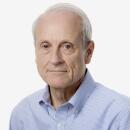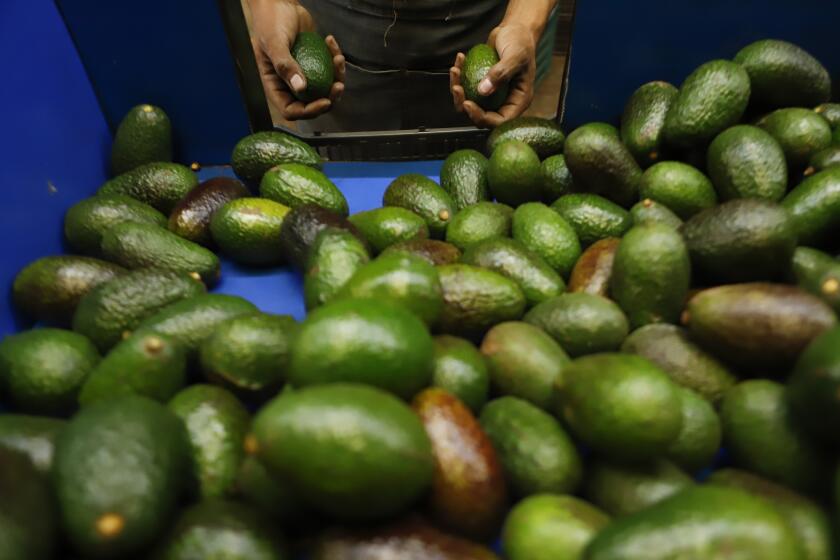At Shadow Hills candidates forum itâs all about the horses
âI used to think it wasnât all about the horses,â a member of the Shadow Hills Property Owners Assn. told all four candidates for the Los Angeles City Councilâs 7th District. The statement drew some quizzical looks from the several dozen other members of the group, gathered for a Jan. 22 City Council candidate forum. Not all about the horses? And then he added:
âBut it is. I admit it.â
Thatâs more like it.
VIDEO: Interviews with L.A.âs mayoral candidates
Shadow Hills is part of the city of Los Angeles, as much as that fact may irk the residents there, and it is part of the 7th District in the Northeast San Fernando Valley, which on March 5 will elect a new member to succeed Richard Alarcon. This little piece of L.A., between Hansen Dam and the wild sage scrub of the Verdugo Hills, bordered roughly by Wentworth Street, Sunland Boulevard and Stonehurst Avenue, is also horse country, and has been officially since 1962, when laws were adopted to change land formerly zoned for agricultural use into the cityâs first horse-keeping district.
The minimum lot size was shrunk from the 40,000 square feet used by commercial flower growers and so-called hobby farmers, but only to 20,000 square feet (according to former Shadow Hills resident Laura R. Barracloughâs âMaking the San Fernando Valleyâ), not to the much smaller lots that subdividers were staking out elsewhere in the Valley for suburban homes. Health codes were amended to allow residents to keep horses as close as 35 feet from residences, not the 75 feet still required in the disappearing agricultural zones. Los Angeles is urban and suburban, and those two identities are in constant tension. But as Shadow Hills residents continue to insist today, their community is something else. Itâs country. In the city.
In his 1991 book âEdge City,â journalist and author Joel Garreau argued that development and living patterns were changing before our eyes but we couldnât always see them because we have been conditioned to see only urban, suburban and rural land. He said there was something else -- the edge city -- that was attracting investment and upscale residents. One of the qualities of a particular type of edge city was something he called âNiceâ -- a place where executives and their spouses would live, and from where they would commute by long drives or even helicopter flights to their corporate towers. To be Nice, an area had to have high SAT scores, scenic vistas, large lots -- and horses. Lots of horses.
But Shadow Hills, not urban and (residents insist) not suburban, is also no edge city. This isnât corporate executive territory. Itâs not Bradbury or Montecito. Property Owners Assn. members certainly have the means to afford larger lots and animals, but they donât generally ride in corporate limousines. They drive SUVs and pickups.
City Councilman Richard Alarcon seemed to grasp that immediately when he took over here just a few months ago after redistricting detached this near-hidden part of the Valley from Studio City and the Hollywood Hills, far to the south, and put it together with neighbors much closer physically but in many ways more distant in self-perception: Pacoima, Arleta, Sun Valley. SHPOA asked Alarcon for help with trail markers and land-use ordinances. In the few months he represented the area, to the extent that he could deliver, he did.
But, as SHPOA President Dave DePinto pointed out at the recent candidate forum, Shadow Hills has never had a council representative for very long, due to redistricting, term limits, vacancies and elections. Before Alarcon this was in Paul Krekorianâs district, but for months before that, the council office sat empty after Wendy Greuel left early to run for city controller. Redistricting even put this community briefly in the hands of Ruth Galanter, who had been elected to represent distant Venice and Westchester. And before that, Joel Wachs, who also was elected to represent other areas but got redistricted into Shadow Hills and donned a pair of cowboy boots to meet his new constituents.
Things are about to be different. Redistricting puts the current lines in place through the 20-teens and into the 2020s. The council person elected in March or after a May runoff, if necessary, may serve up to 12 years, through 2025. This is it. This council member will be for keeps.
The residents here and in the rest of the 7th District have their choice of -- well, now wait a minute. Do they really have a choice? There are four candidates: Three are home-grown activists and, of those, one is a city employee. As of the end of last year, Jesse David Barron reported raising $865 for the race. Krystee Clark and Nicole Chase each raised about 10 times that much -- in the neighborhood of $8,000.
And former Assemblyman Felipe Fuentes had raised $196,350.67.
Yes, candidates are elected by votes, not dollars. But in the news business, we report the amount of money raised because itâs a pretty good clue as to how serious a contender a candidate is going to be. Are you organized? Do people believe in you enough to back you with money? There are those who say that raising nearly $200,000 merely shows how tied in one is with entrenched interests, with lobbyists and contractors, with the corrupt powers that be. OK. I think it also generally shows that one is likely to get elected. And I think that Felipe Fuentes and the people of Shadow Hills -- and the people of Pacoima, Sun Valley, Arleta, Sylmar, Lakeview Terrace, Mission Hills (the communities that surround the independent city of San Fernando the way a doughnut surrounds a hole) -- might want to start getting used to each other.
The Timesâ editorial board endorses candidates based on how well we believe they would serve, regardless of how likely they are to get elected. And before we make our 7th District endorsement, Iâll have more to say about candidates Clark, Barron and Chase. And Fuentes (we are also looking at the other districts).
But also about their district, and Shadow Hills is as good a place to start as any. Life here is good for people who like to ride in the early morning, see the stars fade and watch the sun rise -- and then jump on the 210 or the I-5 to access the more urban attributes of Los Angeles, whether they be work, shopping, culture or even community. In some ways living here is the L.A. dream: city and country together. A self-consciously Western ethic, stewardship of nature, concern for the environment. Fresh air but freeway-close. Shadow Hills residents are happy with their lack of curbs, sidewalks and streetlights, and with their few still-unpaved streets. Residents of other pockets of Los Angeles County -- Topanga, for example -- might understand. Until recently, residents of certain parts of Tarzana, Sylmar and other parts of the Valley would have gotten it as well. This is what, for many, makes Los Angeles worth it.
The concern here for open space brings to mind some of the larger homes on both sides of the Hollywood Hills, where residents in November cheerfully taxed themselves to keep empty parcels empty, to preserve their quality of life and, by the way, to keep their property values up. But Shadow Hills residents have no Santa Monica Mountains Conservancy to protect their open space, nor are lots and uses protected by the covenants, conditions and restrictions that are the norm in other horse-keeping communities. The horse lifestyle of Shadow Hills is protected only by city ordinance, which can be changed by eight votes on the City Council. And voters here and across the city are about to elect eight City Council members. Nine, when you consider a special election in May.
That gives this otherwise idyllic community a sense of being always on the verge of losing everything. Add the fact that in some of the canyons where the horse people ride, there are some very urban reminders. Transient camps, illegal dumping. Huge, licensed landfills. And virtually next door are communities also without curbs or sidewalks, but more because of neglect and poverty than any desire to keep a country feel.
There is a competing critique of Shadow Hills and other horse communities. Laura Barraclough, in her book, argues that these zones and the laws that support them are a post-Jim Crow iteration of racial separation, meant to keep white communities white and apart from menacing African American (Pacoima) and Latino (Arleta) communities. It is an example, she suggests, of the privileged class being subsidized by the have-nots.
Perhaps. Itâs worth noting, though, that the members asking questions at the SHPOA candidatesâ forum were ethnically diverse and, apparently, unified mostly by their love of horses and their desire to protect their community. The Timesâ Mapping L.A. project classifies Shadow Hills as âmoderately diverse.â
In either analysis, the horse is what separates Shadow Hills from semi-industrial and semi-suburban Sun Valley. If you come here looking for votes, youâd better know something about horses.
âI know how to bet on âem, but I donât ride âem,â Fuentes acknowledged to the SHPOA candidatesâ forum last week. âIf you all put me on a horse, Iâm going to learn it. If I donât get thrown.â
Clark said sheâd do everything she could to protect open space, which she suggested could be leveraged to get some tourist dollars into the area.
âWe donât want tourists,â muttered someone from the back of the room.
Elsewhere in Los Angeles, especially elsewhere in the Valley, residents may not live with horses, but theyâre faced with the same questions as the people of Shadow Hills: Is their city urban, suburban, or something entirely different, and what does that mean to city spending, to development, to tax policy, to self-identity, to race, to the interrelationships with other parts of the city?
Those questions always linger in the background but are most urgent at election time. And although election day is March 5, voting by mail begins a week from Monday.
Candidates will appear at a forum in Tujunga on Saturday afternoon.
ALSO:
Republicans rediscover the virtues of immigration reform
More to Read
A cure for the common opinion
Get thought-provoking perspectives with our weekly newsletter.
You may occasionally receive promotional content from the Los Angeles Times.











